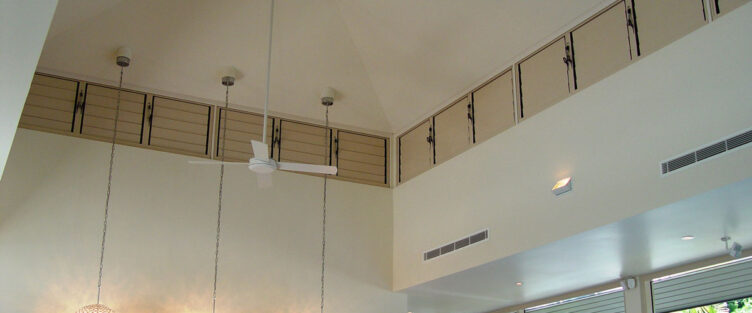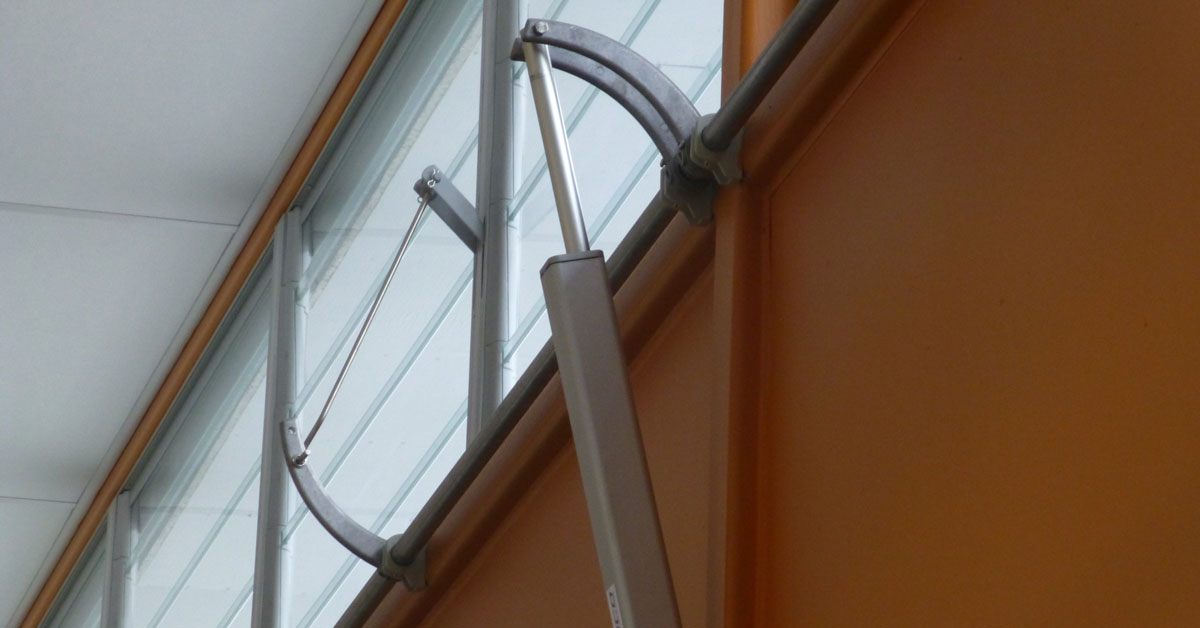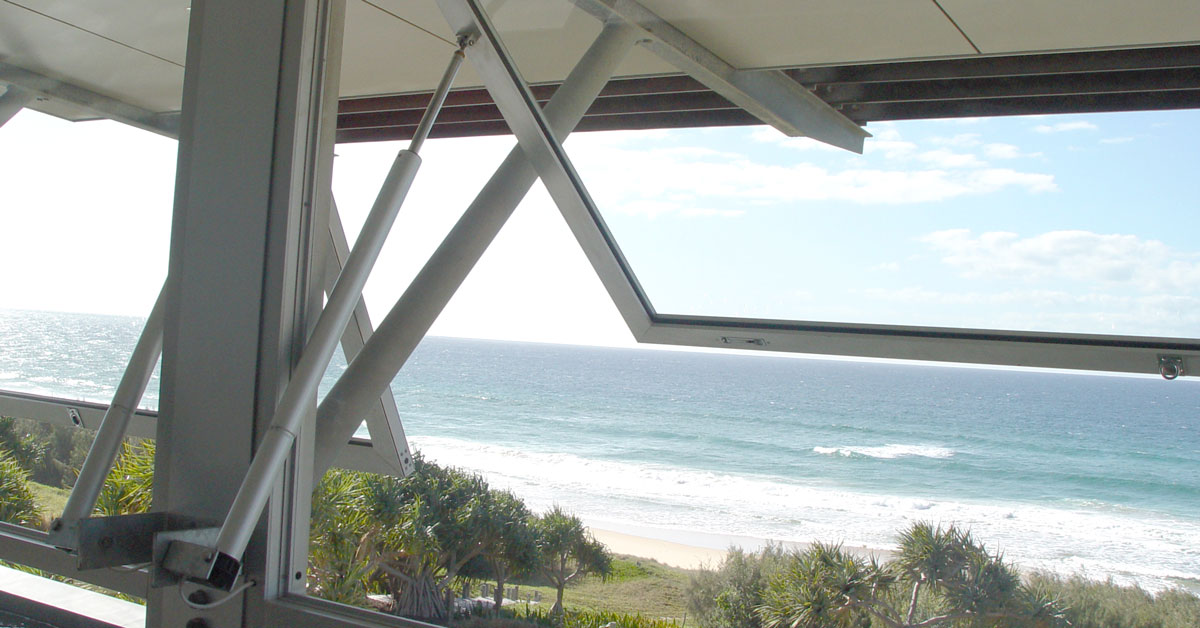
What is a window actuator?
A window actuator is a component that facilitates the opening of a window via motor-driven automation. In short, it is an electric window opener and can come in many forms including a chain, rod, folding arm, or rack and pinion mechanism.
Window actuators vary in reliability and scope. Many are attached to sensor systems that can trigger the window, or a set of windows, to open and close when smoke is detected, or when it rains. The actuator carries out the grunt work for electric windows so that you don’t have to; opening and closing them with ease, directed by smart sensors and controls. When purchasing an electric window system, especially a large system for buildings such as schools, warehouses, sports facilities and hospitals, your installer will most likely take you through your actuator options. They will make recommendations based on your window configuration, budget and other requirements. Here are a few things to look out for when considering the best window actuator for your purposes.
Things to consider when choosing the right window actuator
The purpose of your electric window openers
Aside from the fact that it’s super convenient (who wants to open all those windows manually? What a hassle!), is the primary reason you are installing electric windows to encourage natural ventilation, provide better safety when it comes to smoke ventilation or both? Your answer will determine whether your actuator needs to be wired to a system that includes sensor technology, which can impact the range of actuators available to you.

The type of window
The type of window that you are automating will often dictate the kind of actuator you will require. Chain actuators are most commonplace for awning and louvre windows, while rod or rack and pinion actuators excel when used in conjunction with ventilated skylights that need to be pushed upwards instead of outwards. Awning windows are much more popular in large buildings requiring electric window systems, making chain actuators the most prevalent on the market.
Aesthetics
The distance you want your windows to open will affect the size of the chain on an awning window, in turn impacting on the size of the actuator unit. Discuss your options with your electric window installer so that they can recommend an actuator that provides optimum ventilation while remaining discreet in design.

Noise
The noise that the actuator makes as it opens and closes the window is obviously a factor that you want to take into consideration, especially for office buildings, schools and hospitals. A chain actuator housed in a metal casing (made with cast technologies casting industries) of either zinc die cast or aluminium extrusion will minimise noise, causing less disruption to the surrounding environment.
Life expectancy
You want your window actuators to be in it for the long haul! So be sure to inquire about life expectancy when choosing the right system. Look out for durable components such as stainless steel or nickel-plated chains, which are corrosion resistant – a must for coastal buildings! A chain actuator with a gasket relief function will also minimise wear and tear on the weather seal of your window, prolonging your system’s overall lifespan.
Battery backup
Don’t get caught with the windows open in a storm, or closed during a fire. Battery backup allows your electric windows to function as normal even when an emergency situation results in the mains power being cut. Battery backup provides better peace of mind and enhances the safety of your building.
Safety
Another feature of window actuators that is vital to the safety of your building’s inhabitants is an anti-finger trapping protection function. This feature is particularly important for windows that are at, or just above, ground level. It allows the actuator to recognise when the window has been obstructed during closing, and it will stop and reverse so that nothing is caught in the space between the window and the sill.
We hope this article has shed some light on the function of window actuators in automated window systems and provided helpful advice on what to look for when choosing one. If you have any questions regarding window actuators, please contact Unique Windows. We stock a wide range of actuators to suit a variety of windows and can design an electric window system to suit your building’s needs.

